Nakasendo: Highlights and Dining Along Japan's Historic Trails

Among the hiking trails on the Nakasendo, the Magome-Tsumago trail is very popular. The relatively gradual slope makes it easy to walk, and history buffs will love the historic post town buildings. Read on to learn highlights and dining spots along the Nakasendo.
Hiking Along the Nakasendo: Enjoy Local History and Nature
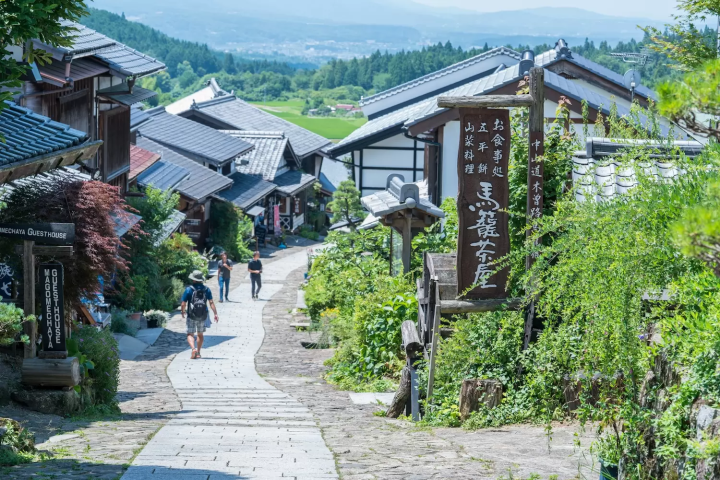
Photo by Pixta
The Nakasendo was one of Japan's major five routes of transportation during the Edo Period (1603-1868). It runs north from present-day Tokyo to Saitama Prefecture, then passes through the prefectures of Gunma, Nagano, Gifu, and Shiga, before ending up at Kyoto.
This article will focus a popular hiking trail from the many trails that exist along the Nakasendo.
This trail starts at Magome-juku, goes over Magome Pass, and ends at Tsumago-juku. It covers a distance of about 8 kilometers and takes three hours to complete.
Nakasendo: Hiking Along Japan's Historic Trails
1. Nakasendo: History and Features
2. Magome to Tsumago: A Popular Hiking Trail Along the Nakasendo
3. Highlights of the Magome - Tsumago Trail
4. How to Get to Magome and Tsumago on the Nakasendo
5. 5 Popular Dining Spots Along the Nakasendo
6. Best Hotels for the Magome-Tsumago Trail
Nakasendo: History and Features
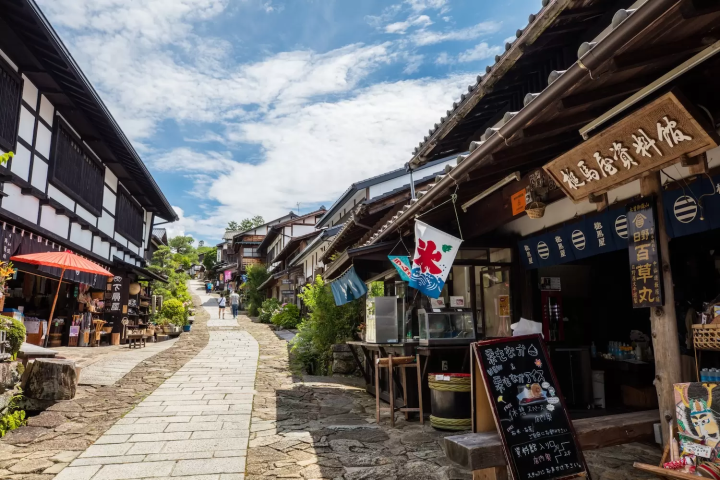
Photo by Pixta
The Nakasendo was a road linking Edo (present-day Tokyo) with Kyoto. It was built about 400 years ago during the early part of the Edo Period. The route extended from Tokyo's Nihonbashi to Kyoto's Sanjo Ohashi and was 530 kilometers in length.
Along the way, there were 69 post towns on the Nakasendo that served as rest areas for travelers.
The Nakasendo was one of Japan's five major routes of transportation, and second only to the Tokaido Route in terms of importance.
The Nakasendo was used by the daimyo (feudal lords) for their alternate attendance trips, or sankin-kotai (*1), and on excursions called Ochatsubo Dochu in which jars of tea from Kyoto's Uji area were presented to the shogun's family.
This route was also used by envoys called Nikko Reiheishi who were sent by the Imperial Court to Nikko Toshogu Shrine.
In the very beginning, the word Nakasendo was written in two different ways in the Japanese language. However, in 1716, upon the suggestion of Confucian scholar Arai Hakuseki, an official spelling (中山道) was decided upon.
The Nakasendo passed through mountains, but there were no big rivers along the way. Unlike the Tokaido route, which had many rivers including the Oi River, Abe River, and Sakawa River, this meant travelers wouldn't have to spend days trying to cross a river.
Though the Nakasendo had some challenging sections, most people were able to complete their journey according to schedule. For this reason, it appears that more travelers chose the Nakasendo over the Tokaido route to get from Edo to Kyoto.
*1 Sankin-kotai: A policy of the Tokugawa Shogunate in which daimyo (feudal lords) were required to alternate their living quarters annually, between their own domain and that of Edo (present-day Tokyo).
Magome-juku to Tsumago-juku: A Popular Hiking Trail Along the Nakasendo
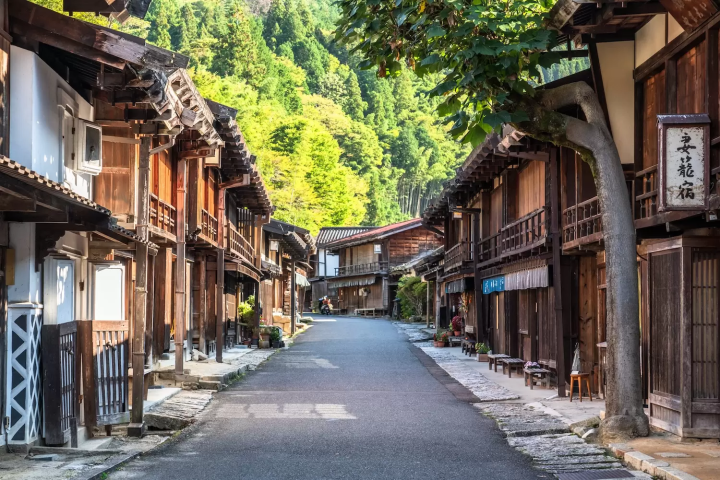
Photo by Pixta
One of the most popular sections of the Nakasendo is the hiking trail that runs from Magome-juku―the 43rd post town from Edo's Nihonbashi―to the neighboring post town of Tsumago-juku.
Partway along the trail you'll get a great view of Mt. Nagisodake from the Magome Pass which sits at an elevation of 790 meters.
Next, we feature some highlights and the best way to access Magome and Tsumago.
Highlights of the Magome - Tsumago Trail on the Nakasendo
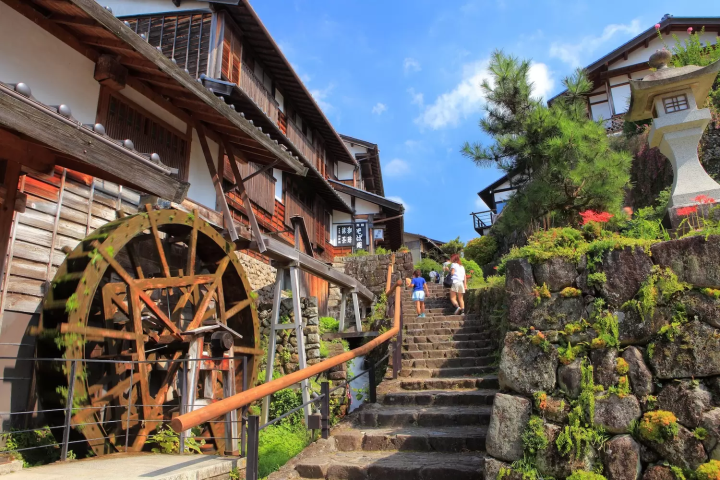
Photo by Pixta
Magome-juku sits on a steep slope and the stone paving makes it one of the rare post towns along the Nakasendo. Both sides of the road are lined with buildings modeled after those from the Edo Period and many sightseeing visitors come and go.
It's also the birthplace of novelist Shimazaki Toson (1872-1943). Magome-juku is the setting for his novel titled "Before the Dawn", which depicts the turbulent times at the end of the Edo Period.
The Toson Memorial Museum sits at the site of his birthplace and is worth a visit. If you take a look at some of the museum's displays, you'll notice that the philosophies and ideas that led to the Meiji Restoration (1868) had even reached a young man living far away in a post town deep in the mountains.
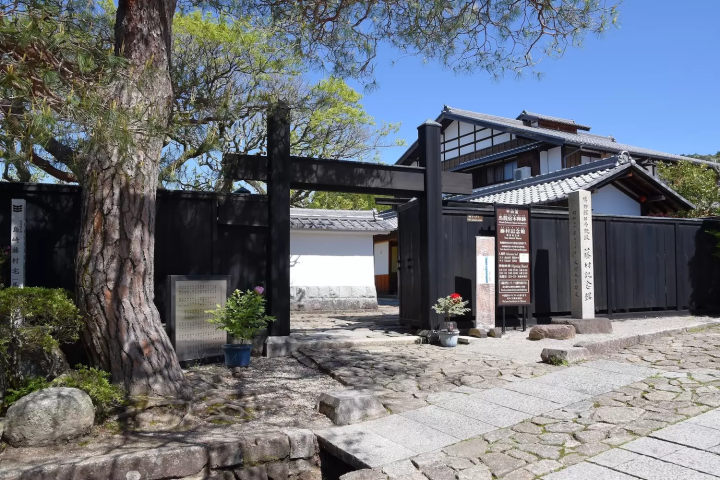
Photo by Pixta
Tsumago-juku, with Edo Period buildings that remain even today, was designated as an Important Preservation District for Traditional Buildings in 1976.
Nagiso Machi Museum consists of three buildings: Waki-Honjin Okutani, Tsumago-juku Honjin, and the History Museum. It's known as a "living museum" where visitors can hear storytellers spin tales about the lives of people who lived here in the past.
During the time when railway and road construction occurred following the Meiji Period (1868-1912), both Magome-juku and Tsumago-juku got left behind. But, as a result, this enabled them to preserve their traditional local streetscapes. It's a precious legacy that conveys history to the present day.
Official website: Nagiso Machi Museum (Japanese)
How to Get to the Magome-Tsumago Trail on the Nakasendo
Access to Magome-juku
By public transport: From JR Nakatsugawa Station take a Kitaena Kotsu Bus and disembark when you reach Magome-juku bus stop (total time is about 25 minutes).
By car: From Nakatsugawa IC, head towards Kiso for about 20 minutes.
Access to Tsumago-juku
By public transport: From JR Nagiso Station take a Nagiso Regional Bus and disembark when you reach Tsumago bus stop (total travel time is about 7 minutes).
By car: From Nakatsugawa IC, head towards Kiso for about 30 minutes.
When traveling between Magome-juku and Tsumago-juku, it's possible to use the Nagiso Regional Bus. However, buses only run about once every two hours, so if you're tired we recommend taking a local city bus.
Official websites:
Magome Tourist Association
Tsumago Tourist Association
5 Popular Dining Spots Along the Nakasendo from Magome to Tsumago
Next, we feature five popular eating spots between Magome-juku and Tsumago-juku:
1. Wachinoya: An oyaki (dumpling) specialty shop in Tsumago-juku
2. Menba Hanamichi Honten: A mazesoba noodle shop
3. Soba Restaurant Kurumaya: A famous soba noodle shop
4. Unagi Yamashina: An Japanese eel specialty shop
5. Magomechaya: Traditional eatery offering gohei mochi and other treats
Each one makes an ideal reststop between Magome-juku and Tsumago-juku.
1. Wachinoya: Taste Delicious Oyaki Buns
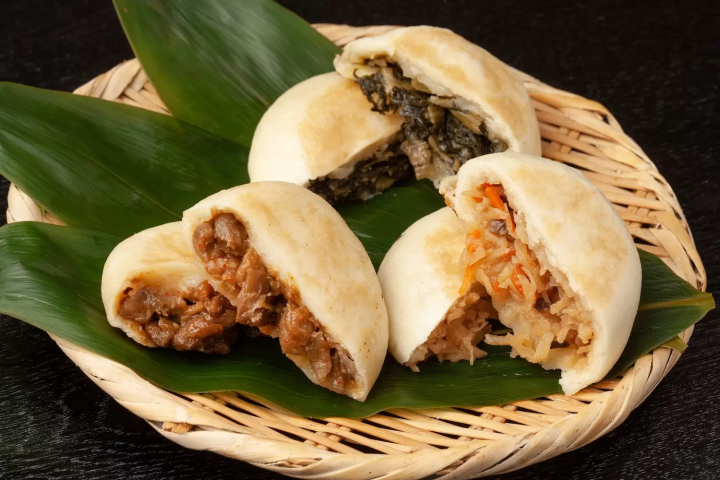
Photo by Pixta
Wachinoya is a shop in Tsumago-juku that specializes in oyaki.
Oyaki is a Japanese dumpling with a wrapping made of wheat and buckwheat flour. The dumpling contains vegetables and other ingredients and is a popular local dish from the mountainous Shinshu (present-day Nagano) area.
This filling dish is stuffed with various ingredients including yomogi (Japanese mugwort), a Japanese leafy vegetable called nozawana, walnuts, pumpkin, and eggplant.
One oyaki costs up to 200 yen and can be ordered as take-out. But we recommend taking a break and enjoying it in the Edo-like atmosphere of the shop. Then warm yourself up with some locally grown hojicha, roasted green tea. The shop ships locally, so oyaki also makes a great souvenir.
Wachinoya
Location: Nagano, Nagiso, Azuma 2199
Access: About 35 minutes from Kiso Fukushima via the Nakatsugawa Interchange (IC).
Official Homepage: Wachinoya
2. Menba Hanamichi Honten: Tasty Mazesoba Noodles
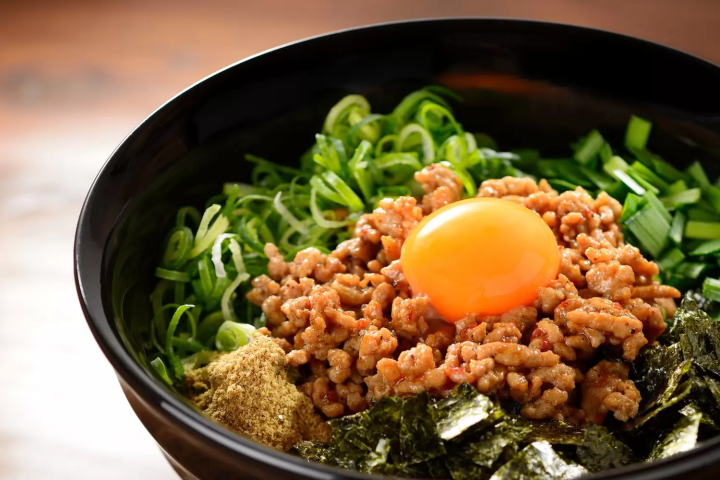
Photo by Pixta
At Menba Hanamichi Honten you can enjoy tasty mazesoba noodles prepared by an owner who trained at a famous shop. Mazesoba is a kind of ramen but with no soup broth―the Chinese-style noodles are served with a shoyu-based sauce instead. (*Shoyu: soy sauce)
At Menba Hanamichi Honten they use homemade whole wheat noodles that are chewy and extra thick. Following the shop's motto of "local production for local consumption," they use plenty of locally grown ingredients. One taste and you'll surely get addicted!
In addition to mazesoba, they also offer a ramen dish that features a combination of animal and seafood-based soup stock. Many customers make a special trip here just for this ramen's tasty chashu pork slices that are cooked at a low temperature two times.
Menba Hanamichi Honten
Location: Gifu, Nakatsugawa, Nakatsugawa 2946-22
Business hours:
Monday to Friday: Lunch 11:00-14:00, Dinner 17:00-24:00
Saturdays and national holidays: 11:00-24:00
Sundays: 11:00-21:00
Access: About 3 minutes by car from the Nakatsugawa IC and about 7 minutes from JR Nakatsugawa Station.
Official website: Menba Hanamichi Honten (Japanese)
3. Soba Restaurant Kurumaya-Nakatsugawa Location
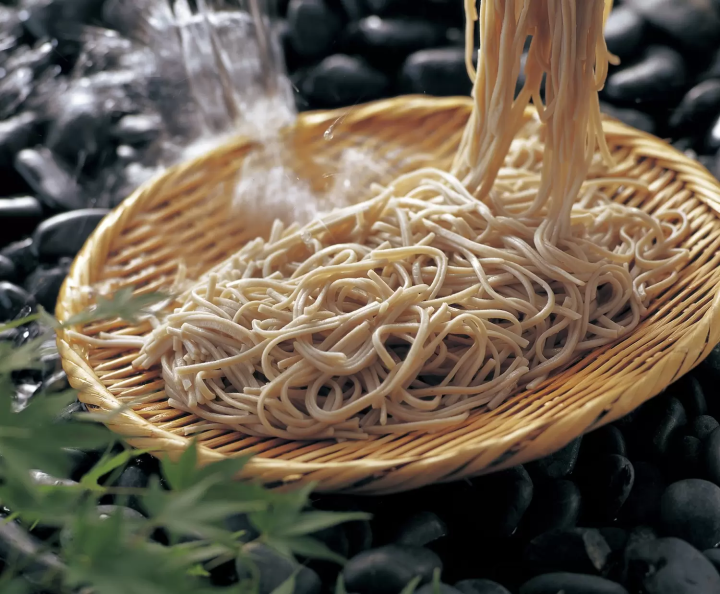
Photo by Pixta
Soba Restaurant Kurumaya (Nakatsugawa Location) is a famous soba noodle shop that's frequented by many of the locals, located near the heart of Nakatsugawa City.
The shop's most popular menu item is the zaru soba which is served on an eye-catching two-tiered bamboo sieve. The noodles are made with Japanese buckwheat flour and feature a distinctive chewy texture. Chicken nanban soba is also a popular dish and uses locally raised Ena chicken.
With 50 table seats and 50 seats on the tatami seating area, the shop can handle large groups. The big picture window gives the interior a spacious, open kind of feeling. There's also parking for up to 40 vehicles.
Soba Restaurant Kurumaya
Location: Gifu, Nakatsugawa, Nakatsugawa 993-2
Business Hours: 11:00-18:00
Access: From the Nakatsugawa IC, take (Japan) National Route 19 towards Kiso for approximately 5 kilometers.
4. Unagi Yamashina
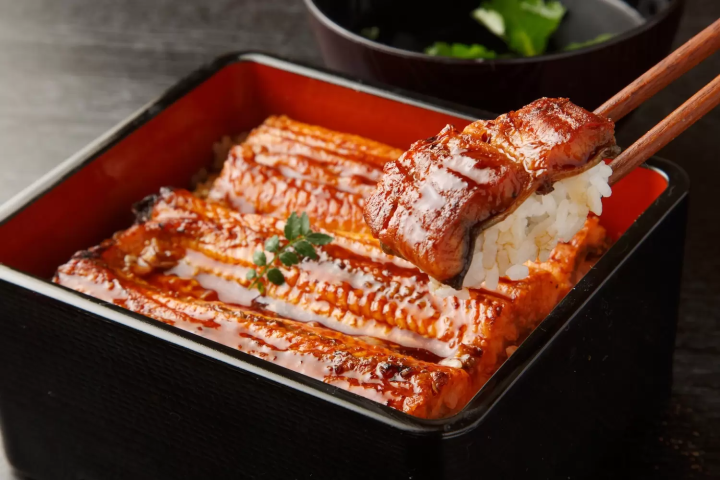
Photo by Pixta
When you pass under the noren curtain adorned with ink writing, a fragrant aroma tickles your nostrils. Welcome to Unagi Yamashina, an unagi (eel) specialty restaurant in Nakatsugawa City!
Here, in addition to unagi donburi (eel rice bowl) and unaju (grilled eel on rice served in a box), they also serve shirayaki. Shirayaki is lightly grilled eel without any sauce or seasoning, allowing you to enjoy the eel's natural flavor.
Kabayaki, the eel fillets served in unagi donburi and unaju, are usually Kansai-style grilled eel that are glazed with sauces, seasonings, and oil before being grilled over a flame. But Yamashina's kabayaki uses a special sauce that gives it an exquisite taste.
Reservations are required at least one day in advance. If you have the chance to visit, we recommend the Unagi Zukushi Course which consists of nine dishes. Diners can enjoy a variety of unagi cuisine, including umaki (unagi wrapped in egg) and unagi tsukudani (simmered eel in sweetened soy sauce).
Unagi Yamashina
Location: Gifu, Nakatsugawa, Shinmachi 1-1 (Main street in front of station).
Business Hours: 11:30-14:00, 17:30-20:00
Access: About five minutes on foot from JR Nakatsugawa Station.
Official website: Unagi Yamashina (Japanese)
5. Magomechaya
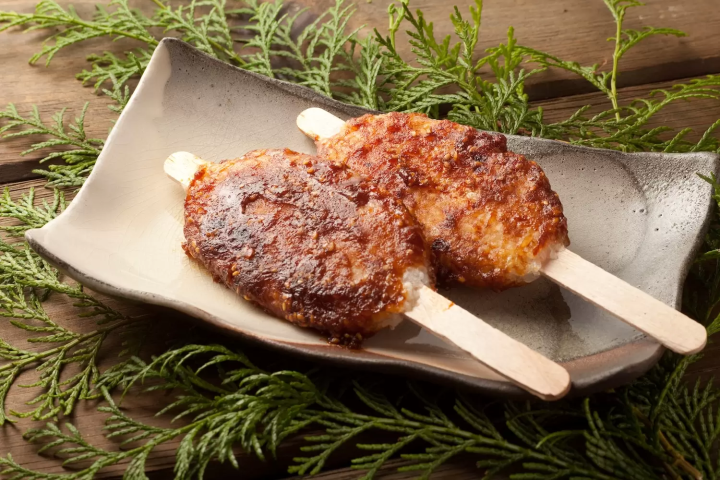
Photo by Pixta
Magomechaya is a restaurant where the shop's building, irori hearth, and senbongoshi latticework remain unchanged from the Edo Period, creating a traditional atmosphere. It's located right near the heart of Magome-juku.
The menu features dishes such as soba noodles, gohei mochi (glutinous rice cakes), and a set meal with chestnut rice.
Gohei mochi is a fragrant grilled mochi that's dipped in a sweet and spicy soy sauce. It's a local dish that's popular as a light snack. The dipping sauce differs from shop to shop. At Magomechaya the sauce has a shoyu base that's accentuated with walnuts, peanuts, and sesame seeds, giving it a rich flavor.
Magomechaya
Location: Gifu, Nakatsugawa, Magome 4296
Access: Get off at the Nakatsugawa IC and take National Route 19 towards Kiso for about 10 minutes.
Official Homepage: Magomechaya
Best Nakasendo Hotels for the Magome-Tsumago Hiking Trail
1. MOUNTAinn Nagiso
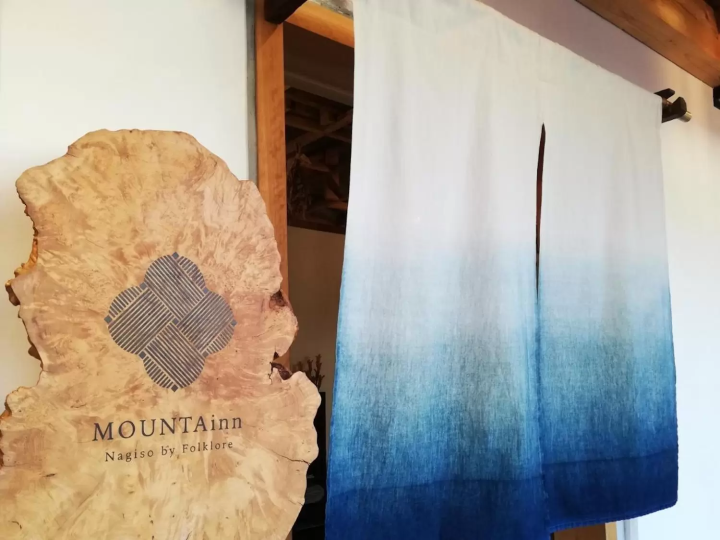
Picture courtesy of Booking.com
MOUNTAinn Nagiso is a guesthouse where you can hear the gentle sounds of the mountain stream from the terrace. You can also reserve the whole building exclusively for yourself.
The four guest rooms all come fully equipped with a desk, soft and fluffy futon beds, free Wi-Fi, heating-air conditioning, and other amenities. Bath and toilet facilities are shared.
There's also a common kitchen and dining area. So you have the freedom to cook and eat your own meals on the premises. It's also possible enjoy your meal on the common outdoor deck as you admire the view of the Kiso River. This is a relaxing guesthouse where visitors can interact easily with each other.
Location: Nagano, Nagiso 3465-1
Access: About one minute on foot from JR Nagiso Station
2. The RYOKAN O
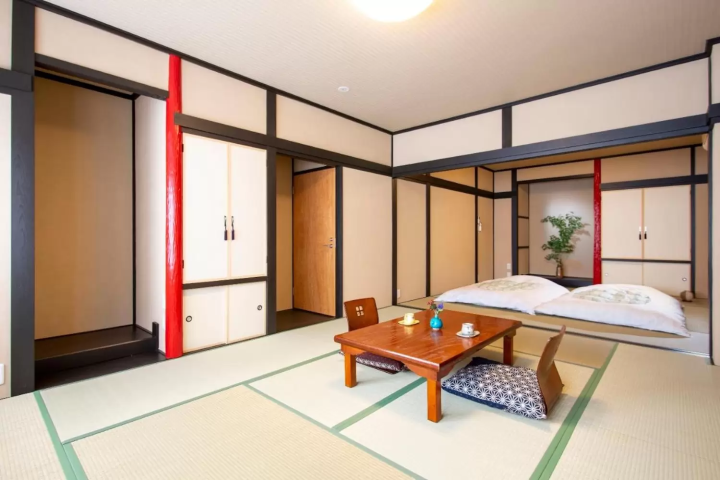
Picture courtesy of Booking.com
The RYOKAN O is a long-established, 120-year-old inn that's been renovated. It's located just two minutes on foot from Nakatsugawa Station.
You can choose from a variety of guest rooms based on the number of people in your party, from twin and double rooms all the way to family rooms. Though toilets and showers are shared, the women's shower has a combination lock for security―so female guests can enjoy a worry-free stay.
The best thing about the ryokan is that it has a bar counter. Here guests can enjoy complimentary coffee and tea (alcohol is extra). Yukata (summer-style kimono) rentals are also available, so interested individuals should inquire at the front desk.
The ryokan conveniently sits right in front of JR Nakatsugawa Station, so you'll get excited about the following day's hike.
Location: Gifu, Nakatsugawa, Otamachi 2-2-24
Access: About three minutes on foot from JR Nakatsugawa Station.
3. Onn Nakatsugawa
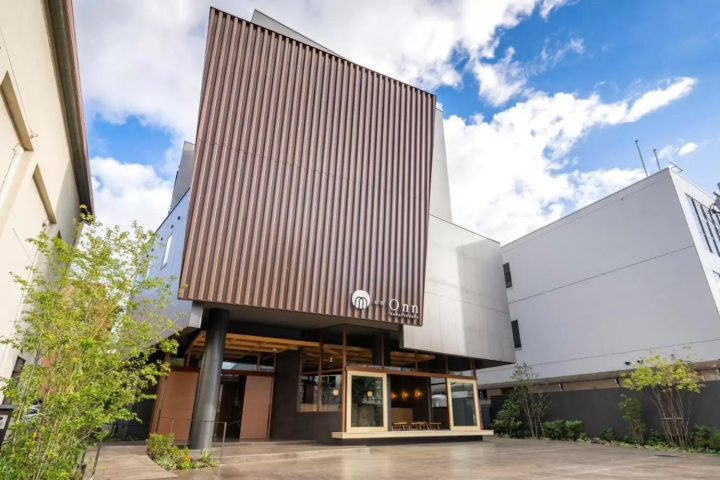
Picture courtesy of Booking.com
Onn Nakatsugawa is a hotel located along the former Nakasendo in Gifu Prefecture's Nakatsugawa City.
The hotel's unusual name is a kind of play on words. It comes from "on," a character in the Japanese language that includes the meaning for warmth (nukumori), plus a different Japanese character also pronounced as "on" that expresses the hotel's desire to show gratitude to the customers and local residents. The name was apparently also chosen to show the hospitality offered by the inn (oyado).
The hotel interior exudes a genuine warmth because cypress wood (Kiso hinoki) has been used throughout the space. There's also a relaxing large bath with the scent of cypress. Then in the morning, you can enjoy local specialties for your breakfast.
Guest rooms are equipped with a wide range of amenities including a shower and toilet, a heating-air conditioning unit, TV, and free Wi-Fi. Some rooms also have a terrace offering splendid views of Nakatsugawa, so guests can enjoy summer firework displays. The late-night snack service is also a thoughtful touch.
Onn Nakatsugawa
Location: Gifu, Nakatsugawa, Shinmachi 7-43
Access: About five minutes on foot from JR Nakatsugawa Station.
Enjoy Your Nakasendo Journey
Magome-juku and Tsumago-juku are two of the post stations along the Nakasendo―one of Japan's major five transportation routes during the Edo Period. Even today their historic streetscapes remain, allowing you to enjoy an old-fashioned atmosphere.
Both spots are also easily accessible. For example, from JR Nakatsugawa Station it's only a 25-minute bus ride to Magome-juku.
From Tokyo Station, you can get to Nakatsugawa within three hours by taking the Tokaido Shinkansen to Nagoya and then transferring to the JR Chuo Main Line.
The area has many popular spots in addition to the restaurants and hotels introduced in this article. So by all means please come for a visit!
Read also
Written by Kakutama editorial team
This is the official account of MATCHA's editorial department. Our articles feature useful travel information for visitors to Japan, from how-to guides to recommended places to visit.



































![[Northern Okinawa] 4 Recommended Cosmos Fields in Okinawa | Sunflowers and Cherry Blossoms in the Same Season!](https://resources.matcha-jp.com/resize/720x2000/2024/08/12-192028.webp)



![[Corporate Visit List] Near Kansai Airport! Discover Japan’s Technology and Business Philosophy through Industrial Tourism](https://resources.matcha-jp.com/resize/720x2000/2024/12/13-215168.webp)